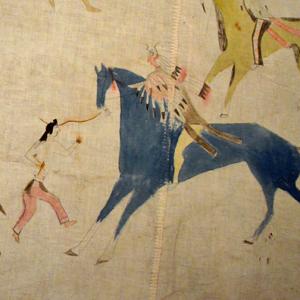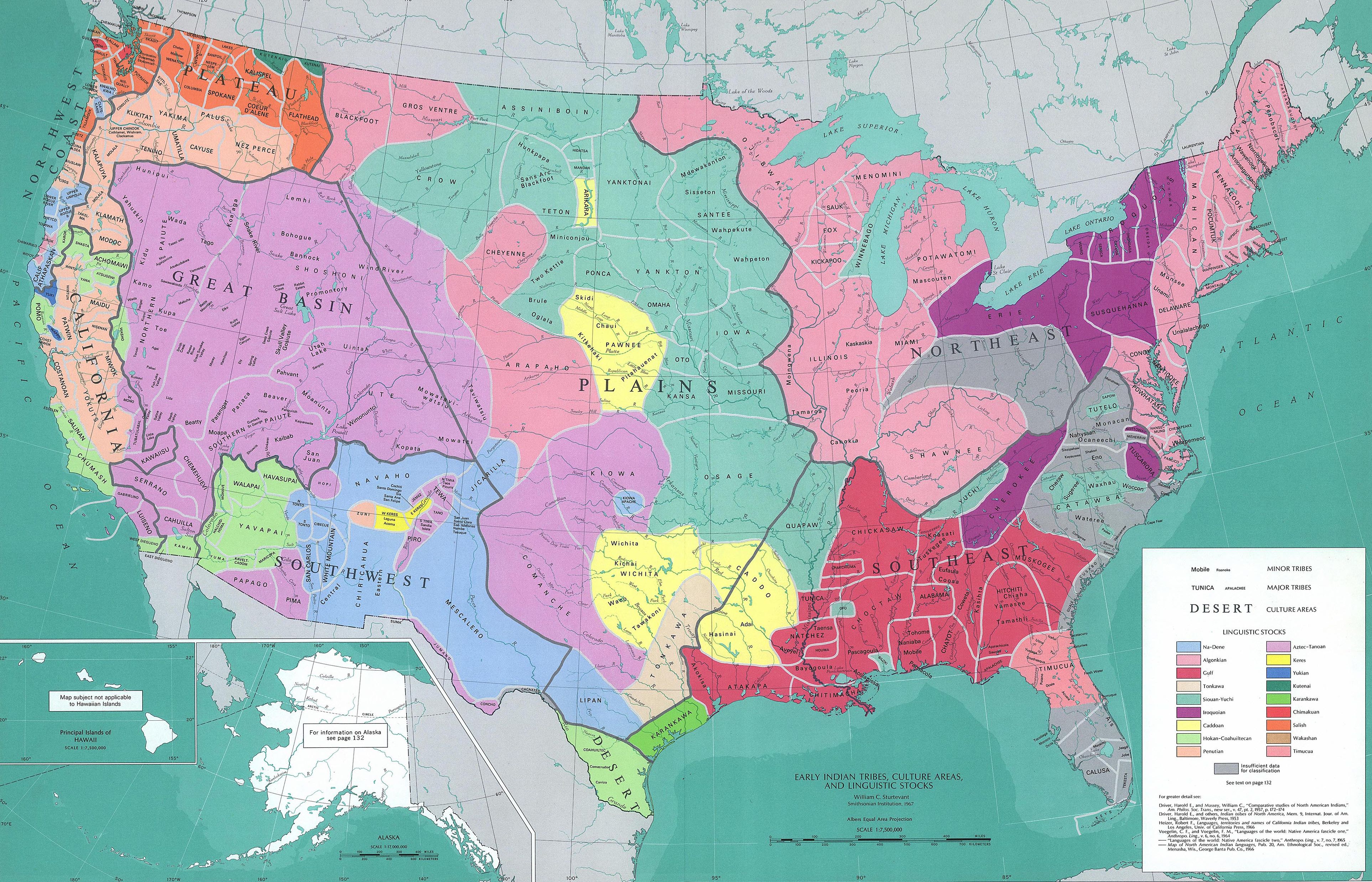|
Cheyenne
The Cheyenne ( ) are an Indigenous people of the Great Plains. The Cheyenne comprise two Native American tribes, the Só'taeo'o or Só'taétaneo'o (more commonly spelled as Suhtai or Sutaio) and the (also spelled Tsitsistas, The term for the Cheyenne homeland is ''Tsistano''. Language The Cheyenne of Montana and Oklahoma speak the Cheyenne language, known as ''Tsėhésenėstsestȯtse'' (common spelling: Tsisinstsistots). Approximately 800 people speak Cheyenne in Oklahoma. There are only a handful of vocabulary differences between the two locations. The Cheyenne alphabet contains 14 letters. The Cheyenne language is one of the larger Algonquian-language group. Formerly, the Só'taeo'o (Só'taétaneo'o) or Suhtai (Sutaio) bands of Southern and Northern Cheyenne spoke ''Só'taéka'ėškóne'' or ''Só'taenėstsestȯtse'', a language so close to ''Tsėhésenėstsestȯtse'' (Cheyenne language), that it is sometimes termed a Cheyenne dialect. History The earliest written reco ... [...More Info...] [...Related Items...] OR: [Wikipedia] [Google] [Baidu] |
Cheyenne Language
The Cheyenne language (, , informal spelling ) is the Native American language spoken by the Cheyenne people, predominantly in present-day Montana and Oklahoma, in the United States. It is part of the Algonquian language family. Like all other Algonquian languages, it has complex agglutinative polysynthetic morphology. This language is considered endangered, at different levels, in both states. Classification Cheyenne is one of the Algonquian languages, which is a sub-category of the Algic languages. Specifically, it is a Plains Algonquian language. However, Plains Algonquian, which also includes Arapaho and Blackfoot, is an areal rather than genetic subgrouping. Geographic distribution Cheyenne is spoken on the Northern Cheyenne Indian Reservation in Montana and in Oklahoma. On the Northern Cheyenne Indian Reservation in March 2013 there were approximately 10,050 enrolled tribal members, of which about 4,939 resided on the reservation; slightly more than a quarter of ... [...More Info...] [...Related Items...] OR: [Wikipedia] [Google] [Baidu] |
Cheyenne And Arapaho Tribes
The Cheyenne and Arapaho Tribes are a united, federally recognized tribe of Southern Arapaho and Southern Cheyenne people in western Oklahoma. History The Cheyennes and Arapahos are two distinct tribes with distinct histories. The Cheyenne (Tsitsistas/ The People) were once agrarian, or agricultural, people located near the Great Lakes in present-day Minnesota. Grinnell notes the Cheyenne language is a unique branch of the Algonquian language family and, The Nation itself, is descended from two related tribes, the Tsitsistas and the Suh' Tai. The latter is believed to have joined the Tsitsistas in the early 18th century (1: 1–2). The Tsitsistas and the Suh' Tai are characterized, and represented by two cultural heroes who received divine articles which shaped the time-honored belief systems of the Southern and Northern families of the Cheyenne Nation. The Suh' Tai, represented by a man named Erect Horns, were blessed with the care of a sacred Buffalo Hat, which is kept among ... [...More Info...] [...Related Items...] OR: [Wikipedia] [Google] [Baidu] |
Northern Cheyenne Tribe Of The Northern Cheyenne Indian Reservation
The Northern Cheyenne Tribe of the Northern Cheyenne Indian Reservation () is the List of federally recognized tribes, federally recognized Northern Cheyenne tribe and a Plains tribe. The Northern Cheyenne Indian Reservation is Indian reservation, reservation located in southeastern Montana, that is approximately large. It is home to approximately 6,000 Cheyenne people. The reservation is bounded on the east by the Tongue River (Montana), Tongue River and on the west by the Crow Indian Reservation, Crow Reservation. There are small parcels of non-contiguous off-reservation trust lands in Meade County, South Dakota, northeast of the city of Sturgis, South Dakota, Sturgis. Its timbered ridges that extend into northwestern South Dakota are part of Custer National Forest and it is approximately east of the site of the 1876 Battle of the Little Bighorn. In March 2013, the Northern Cheyenne Tribe had 12,266 people enrolled citizens, of which about 6,012 resided on the reservation, wit ... [...More Info...] [...Related Items...] OR: [Wikipedia] [Google] [Baidu] |
Northern Cheyenne
The Northern Cheyenne Tribe of the Northern Cheyenne Indian Reservation () is the federally recognized Northern Cheyenne tribe and a Plains tribe. The Northern Cheyenne Indian Reservation is reservation located in southeastern Montana, that is approximately large. It is home to approximately 6,000 Cheyenne people. The reservation is bounded on the east by the Tongue River and on the west by the Crow Reservation. There are small parcels of non-contiguous off-reservation trust lands in Meade County, South Dakota, northeast of the city of Sturgis. Its timbered ridges that extend into northwestern South Dakota are part of Custer National Forest and it is approximately east of the site of the 1876 Battle of the Little Bighorn. In March 2013, the Northern Cheyenne Tribe had 12,266 people enrolled citizens, of which about 6,012 resided on the reservation, with approximately 91% of the population Native American (full or part blood quantum) and 72.8% identifying as Cheyenne. Slig ... [...More Info...] [...Related Items...] OR: [Wikipedia] [Google] [Baidu] |
Arapaho
The Arapaho ( ; , ) are a Native American people historically living on the plains of Colorado and Wyoming. They were close allies of the Cheyenne tribe and loosely aligned with the Lakota and Dakota. By the 1850s, Arapaho bands formed two tribes, namely the Northern Arapaho and Southern Arapaho. Since 1878, the Northern Arapaho have lived with the Eastern Shoshone on the Wind River Reservation in Wyoming and are federally recognized as the Northern Arapaho Tribe of the Wind River Reservation. The Southern Arapaho live with the Southern Cheyenne in Oklahoma. Together, their members are enrolled as the federally recognized Cheyenne and Arapaho Tribes. Names It is uncertain where the word ''Arapaho'' came from. Europeans may have derived it from the Pawnee word for "trader", ''iriiraraapuhu'', or it may have been a corruption of a Crow word for "tattoo", ''alapúuxaache''. The Arapaho autonym is or ("our people" or "people of our own kind"). They refer to their t ... [...More Info...] [...Related Items...] OR: [Wikipedia] [Google] [Baidu] |
Crow Nation
The Crow, whose autonym is Apsáalooke (), are Native Americans living primarily in southern Montana. Today, the Crow people have a federally recognized tribe, the Crow Tribe of Montana, with an Indian reservation, the Crow Indian Reservation, located in the south-central part of the state. Crow Native Americans are a Plains tribe, who speak the Crow language, part of the Missouri River Valley branch of Siouan languages. Of the 14,000 enrolled tribal citizens, an estimated 3,000 spoke the Crow language in 2007. In historical times, the Crow lived in the Yellowstone River valley, which extends from present-day Wyoming, through Montana, and into North Dakota, where it joins the Missouri River. During the United States' expansion into the West, the Crow allied with the Americans against their neighbors and rivals, the Dakota, Lakota, and Cheyenne. Since the 19th century, Crow people have been concentrated on their reservation established south of Billings, Montana. Today ... [...More Info...] [...Related Items...] OR: [Wikipedia] [Google] [Baidu] |
Lakota People
The Lakota (; or ) are a Native Americans in the United States, Native American people. Also known as the Teton Sioux (from ), they are one of the three prominent subcultures of the Sioux people, with the Eastern Dakota (Santee) and Western Dakota (). Their current lands are in North Dakota, North and South Dakota. They speak — the Lakota language, the westernmost of three closely related languages that belong to the Siouan languages, Siouan language family. The seven bands or "sub-tribes" of the Lakota are: * (, Burned Thighs) * ("They Scatter Their Own") * (, Without Bows) * (Hunkpapa, "End Village", Camps at the End of the Camp Circle) * (Miniconjou, "Plant Near Water", Planters by the Water) * ("Blackfeet" or "Blackfoot") * (Two Kettles) Notable Lakota persons include (Sitting Bull) from the , (Touch the Clouds) from the Miniconjou; (Black Elk), (Red Cloud), and (Billy Mills), all ; (Crazy Horse) from the and Miniconjou, and (Spotted Tail) from the ... [...More Info...] [...Related Items...] OR: [Wikipedia] [Google] [Baidu] |
Indigenous People Of The Great Plains
Plains Indians or Indigenous peoples of the Great Plains and Canadian Prairies are the Native American tribes and First Nations peoples who have historically lived on the Interior Plains (the Great Plains and Canadian Prairies) of North America. While hunting-farming cultures have lived on the Great Plains for centuries prior to European contact, the region is known for the horse cultures that flourished from the 17th century through the late 19th century. Their historic nomadism and armed resistance to domination by the government and military forces of Canada and the United States have made the Plains Indian culture groups an archetype in literature and art for Native Americans everywhere. The Plains tribes are usually divided into two broad classifications which overlap to some degree. The first group became a fully nomadic horse culture during the 18th and 19th centuries, following the vast herds of American bison, although some tribes occasionally engaged in agricult ... [...More Info...] [...Related Items...] OR: [Wikipedia] [Google] [Baidu] |
Plains Indians
Plains Indians or Indigenous peoples of the Great Plains and Canadian Prairies are the Native American tribes and First Nations peoples who have historically lived on the Interior Plains (the Great Plains and Canadian Prairies) of North America. While hunting-farming cultures have lived on the Great Plains for centuries prior to European contact, the region is known for the horse cultures that flourished from the 17th century through the late 19th century. Their historic nomadism and armed resistance to domination by the government and military forces of Canada and the United States have made the Plains Indian culture groups an archetype in literature and art for Native Americans everywhere. The Plains tribes are usually divided into two broad classifications which overlap to some degree. The first group became a fully nomadic horse culture during the 18th and 19th centuries, following the vast herds of American bison, although some tribes occasionally engaged in agricul ... [...More Info...] [...Related Items...] OR: [Wikipedia] [Google] [Baidu] |
Montana
Montana ( ) is a landlocked U.S. state, state in the Mountain states, Mountain West subregion of the Western United States. It is bordered by Idaho to the west, North Dakota to the east, South Dakota to the southeast, Wyoming to the south, and the Provinces and territories of Canada, Canadian provinces of Alberta, British Columbia, and Saskatchewan to the north. It is the List of U.S. states and territories by area, fourth-largest state by area, but the List of U.S. states and territories by population, eighth-least populous state and the List of U.S. states and territories by population density, third-least densely populated state. Its List of capitals in the United States, capital is Helena, Montana, Helena, while the List of municipalities in Montana, most populous city is Billings, Montana, Billings. The western half of the state contains numerous mountain ranges, while the eastern half is characterized by western prairie terrain and badlands, with smaller mountain ranges f ... [...More Info...] [...Related Items...] OR: [Wikipedia] [Google] [Baidu] |
Colorado
Colorado is a U.S. state, state in the Western United States. It is one of the Mountain states, sharing the Four Corners region with Arizona, New Mexico, and Utah. It is also bordered by Wyoming to the north, Nebraska to the northeast, Kansas to the east, and Oklahoma to the southeast. Colorado is noted for its landscape of mountains, forests, High Plains (United States), high plains, mesas, canyons, plateaus, rivers, and desert lands. It encompasses most of the Southern Rocky Mountains, as well as the northeastern portion of the Colorado Plateau and the western edge of the Great Plains. Colorado is the List of U.S. states and territories by area, eighth-largest U.S. state by area and the List of U.S. states and territories by population, 21st by population. The United States Census Bureau estimated the population of Colorado to be 5,957,493 as of July 1, 2024, a 3.2% increase from the 2020 United States census. The region has been inhabited by Native Americans in the United St ... [...More Info...] [...Related Items...] OR: [Wikipedia] [Google] [Baidu] |







